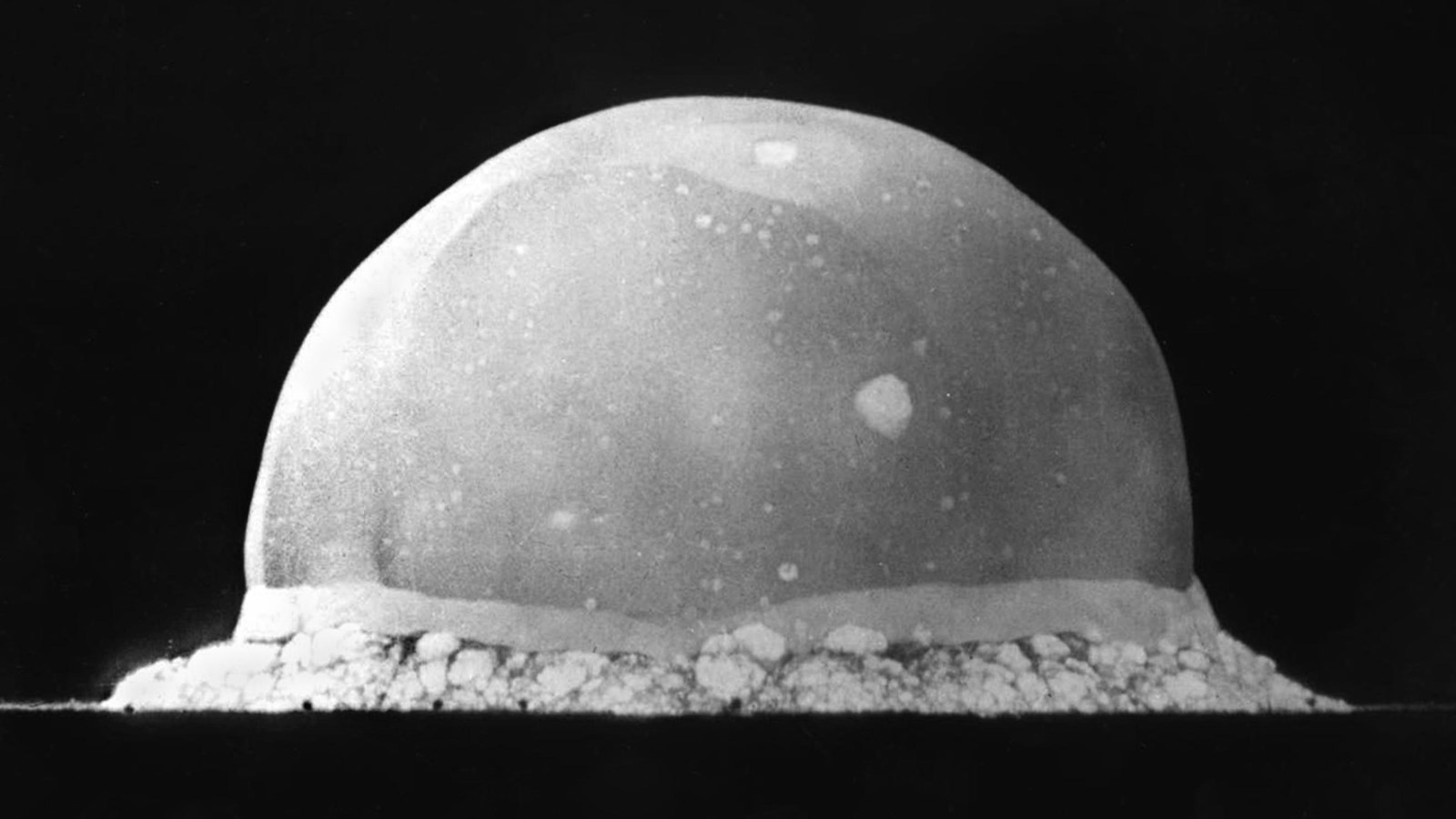Last updated: March 15, 2025
Place
Trinity Site, NM

US DEPARTMENT OF ENERGY
Trinity Site is located on White Sands Missile Range and is closed to the public. Once a year, the US Army hosts a Trinity Site Open House when the public may visit Trinity Site.
On July 16, 1945, the atomic age began. Manhattan Project scientists detonated the first atomic device, known as “the Gadget,” at 5:29 am Mountain War Time at the Trinity Site in the Jornada del Muerto desert of New Mexico.
For the Project Trinity test, the bomb was placed atop a 100-foot (30.48 m) tall steel tower that was designated Zero. Ground Zero was at the foot of the tower. Equipment, instruments, and observation points were established at varying distances from Ground Zero. The wooden observation shelters were protected by concrete and earthen barricades, and the nearest observation point was 5.7 miles (9.17 km) from Ground Zero.
An incredible flash of light illuminated the sky as air temperatures rose to over 9,000oF (4982oC). Within seconds, witnesses saw the first mushroom cloud ever created by atomic weaponry. To most observers—watching through dark glasses—the brilliance of the light from the explosion overshadowed the shock wave and sound that arrived some seconds later. A multi-colored cloud surged 38,000 feet (11.58 km) into the air within seven minutes. Where the tower once stood was a crater one-half mile (804 m) across and 8 feet (2.43 m) deep. Sand in the crater was fused by the intense heat into a glass-like solid, the color of green jade. This material was given the name trinitite. The explosion point was named Trinity Site.
Although no information on the test was released until after the atomic bombings of Japan on August 6 and 9, 1945, the flash of light and shock wave made a vivid impression over an area with a radius of at least 160 miles (257.49 km). Kenneth Bainbridge, director of the Trinity Test, called it “a foul and awesome display.” Despite months of speculation and wondering over what would happen, “the atom bomb did not fit into any pre-conceptions possessed by anybody,” according to future Los Alamos National Lab director Norris Bradbury. After three years of directing the project’s scientists and much anxious chain smoking at the Trinity Site, Robert Oppenheimer simply said to his brother, “it worked.”
After the explosion, Trinity Site was encircled with more than a mile (1.6 km) of chain-link fencing. Signs were posted to warn people of radioactivity. By 1953, much of the radioactivity had subsided, and the first Trinity Site open house was held in September of that year.
In 1965, Army officials erected a monument on Ground Zero. In 1975, the National Park Service designated Trinity Site as a National Historic Landmark. The landmark includes base camp, where the scientists and support group lived; the McDonald ranch house, where the plutonium core was assembled; as well as Ground Zero.
.Continue Your Journey
K-Site, Q-Site, and L-Site were critical locations for studying and understanding implosion before the Trinity Test. Learn more about the history of the Manhattan by visiting the Bradbury Science Museum! The museum’s interactive exhibits share stories from the project and provide a glimpse of other “behind the fence” historical sites.
